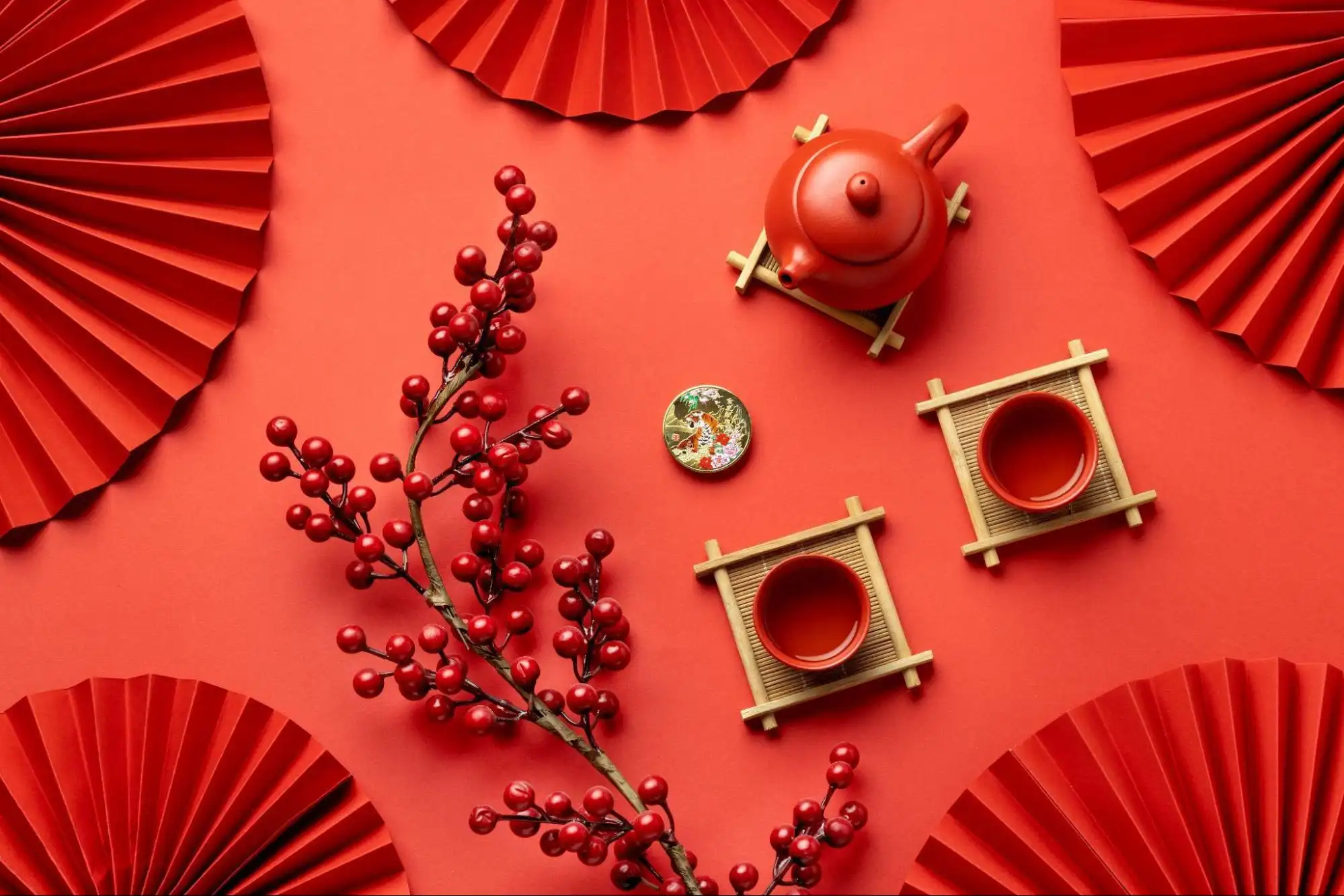Chinese New Year, also known as the Spring Festival, is a traditional New Year celebration observed by the Chinese community worldwide. This celebration has a rich history, emphasizes values of goodness, and involves unique traditions.
Also Read: Apply for a Loan Through BFI Finance Now!
1. History of Chinese New Year
1.1 History of Chinese New Year: Remembering Traditional Roots
Chinese New Year has deep roots in the history of China. This tradition not only reflects the joy of celebrating the turn of the year but is also a cultural heritage rich in values and beliefs. Its long history began thousands of years ago during the Shang Dynasty, a period when the Chinese lived in harmony with nature.
Initially, Chinese New Year celebrations were not as grand and festive as we know them today. It started as a small ceremony aimed at praying for fertile land and a bountiful harvest. The people of that time were highly dependent on nature and seasons, making the New Year transition a crucial time to celebrate abundant harvests.
The Shang Dynasty also contributed to the development of the Chinese calendar, which became the basis for determining the date of Chinese New Year. This transition was marked not only by lunar cycles but also influenced by solar cycles, reflecting the wisdom of astronomers and astrologers of that era.
1.2 Nian Mythology: The Fascinating Story Behind Chinese New Year
One of the most intriguing elements in the history of Chinese New Year is the myth of Nian. Nian, in Chinese, means "year." According to legend, Nian is a mythological creature that emerges every year to prey on humans and animals. This belief laid the foundation for many traditions developed during the Chinese New Year celebration.
Ancient Chinese society believed that Nian feared loud noises, bright colors, and firecrackers. Therefore, they developed various ways to drive away Nian on the New Year's Eve. Traditions like drumming, firecrackers, and celebrating in colorful attire were not just for entertainment but also served as protection against this mythical creature.
1.3 Evolution of Traditions Over Time
Over time, Chinese New Year traditions continued to evolve and undergo transformations. During the Tang Dynasty, the celebration became a showcase of wealth and success, with people competing to present special foods and spectacular art performances. The New Year transition became a time to display prosperity and social status.
However, during the Qing Dynasty, Chinese New Year celebrations faced suppression. The Qing government banned several traditional practices, considering them acts of disloyalty to the regime. Despite the ban, the people continued to preserve and safeguard their traditions quietly.
1.4 Continuity of Traditions: A Significant Moment for Life Balance
Despite going through challenging times and political changes, the Chinese New Year celebration remains a crucial moment for the Chinese people. More than just a New Year's celebration, it is a time for family reunions, honoring ancestors, and reflecting on life values.
Values such as loyalty to family, respect for ancestors, and honoring traditions remain the foundation of this celebration. The Chinese view Chinese New Year as an opportunity to erase past mistakes, start anew, and strive for a better life.
Also Read: Reading Someone's Personality Based on Chinese Zodiac Signs: Is it Accurate?
2. Goodness Values in the Chinese New Year Celebration
2.1 Promotion of Goodness Values
Chinese New Year is not only a historical celebration but also promotes profound goodness values. One highly valued principle is gratitude. The Chinese use this moment to reflect on the achievements and fortunes they have experienced in the past year, expressing gratitude for hard work and sharing happiness with family and friends.
2.2 Solidarity and Brotherhood
Additionally, solidarity and brotherhood are also major focuses of this celebration. Gathering with extended family, both near and far, strengthens family bonds and promotes cooperation. The Chinese often express their wishes for "Nian Nian You Yu," meaning "Year after year filled with happiness." This expresses the hope that happiness will accompany them throughout the year.
3. Unique Traditions of Chinese New Year
3.1 House Cleaning
Chinese New Year is known for a number of unique and striking traditions. One of the most famous traditions is the thorough cleaning of homes, known as "sweeping the dust" or "suci rumah." This is done to rid the house of accumulated negative energy from the past year and prepare it to welcome new luck.
3.2 Lion and Dragon Dances

Additionally, the Chinese New Year celebration is synonymous with lion and dragon dance performances. These performances carry spiritual significance and are believed to bring luck and ward off evil spirits. Adorned in colorful costumes symbolizing joy and luck, these dances are not only entertainment but are also considered a crucial part of auspicious ceremonies.
Food also plays a significant role in the Chinese New Year celebration. Traditional foods such as dumplings, nian gao (New Year cake), and red-colored dishes symbolize luck and success. The Chinese believe that by consuming these foods during the celebration, they will bring good fortune and happiness.
Also Read: Chinese Zodiac and Western Zodiac Predicted to be Financially Lucky in 2024
4. Chinese New Year Celebrations, Challenges, and Innovations
4.1 Global Celebrations
While Chinese New Year has strong roots in China, the celebration is not confined to one country. The Chinese community worldwide celebrates Chinese New Year with spirit and enthusiasm. Joy is felt in major cities around the world with fireworks parades, lion dances, and vibrant food festivals.
In some countries, Chinese New Year is also embraced by non-Chinese communities as a way to celebrate cultural diversity. This creates moments of togetherness among ethnicities and enhances cross-cultural understanding.
4.2 Challenges and Innovations in the Modern Era
Although the traditions of Chinese New Year are diligently preserved, challenges have arisen in the modern era. Globalization and technology have brought changes to how this celebration is observed. Many overseas Chinese may face difficulties returning to their hometowns, but technology provides solutions through video connections and phone calls to stay connected with family.
On the flip side, some innovations have also emerged in the Chinese New Year celebration. For example, the use of drones in fireworks displays creates stunning and futuristic visuals. Similarly, social media platforms allow people to share their celebration moments with the world, expanding the coverage and understanding of this celebration.
Chinese New Year is not only a New Year celebration for the Chinese but also a moment of reflection, gratitude, and family solidarity. Its rich history, applied goodness values, and unique traditions make it a vibrant and meaningful celebration.
The celebration of Chinese New Year extends beyond China, reaching various parts of the world, highlighting the importance of cultural diversity. Despite modern challenges, the Chinese community strives to preserve and honor their traditions while incorporating innovations that bring a fresh spirit to this celebration.
By celebrating Chinese New Year, the Chinese not only welcome the new year with hope but also strengthen family bonds, promote solidarity, and mark the cultural diversity that enriches us all.
BFI Finance is a company that provides multi-purpose loans with guarantees for motorbike bpkb, car bpkb, and house or shophouse certificates







